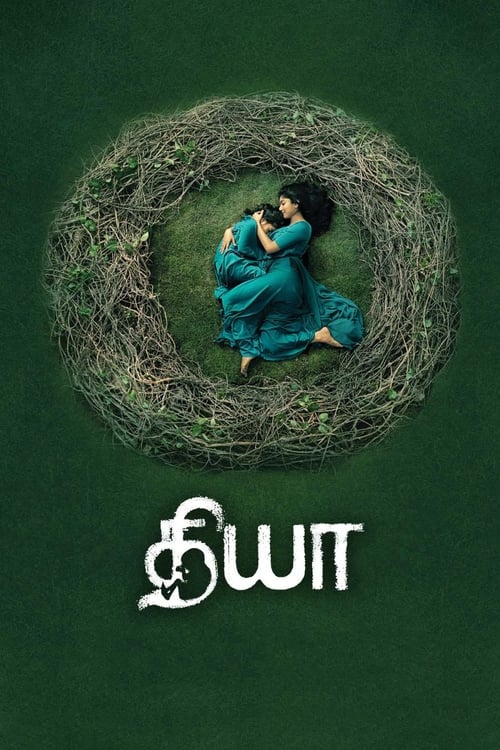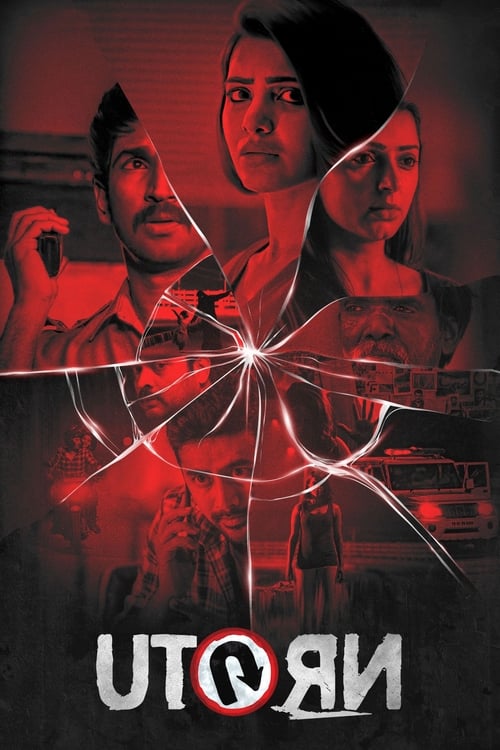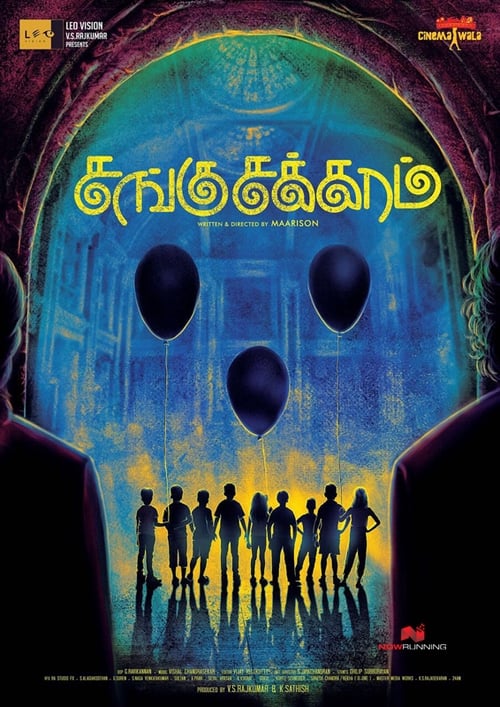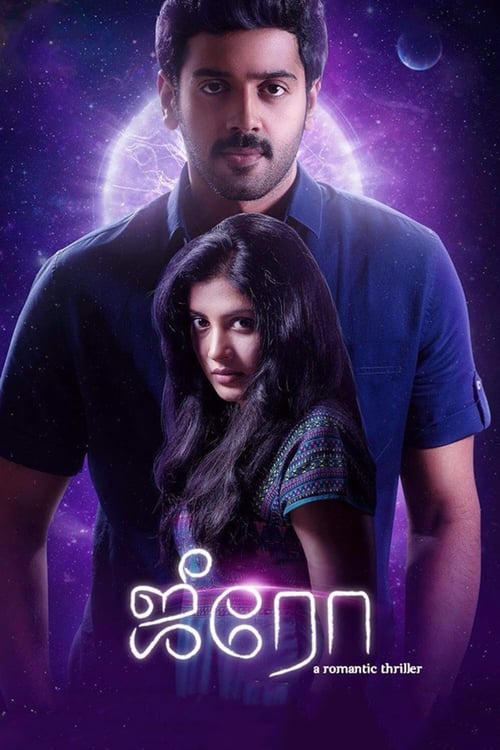
Ask Your Own Question
What is the plot?
The sun hangs low over the Tamil countryside, casting long shadows that seem to stretch and twist like living things. The air is thick with the scent of jasmine and the faint, unsettling hum of ancient curses. In a small village, Sarva walks alone, his face etched with the weight of a secret he has carried since childhood. He is a man whose horoscope is marked by Naga dhosham--a serpent curse that dooms any woman who marries him to a life of danger, even death. For years, Sarva has lived in isolation, pushing away anyone who tries to get close. But one woman refuses to be ignored.
Divya has followed Sarva for three years, her obsession growing with each passing day. She is relentless, her love bordering on madness. One evening, she corners him near the village temple, her eyes blazing with desperation. "If you don't accept me," she says, her voice trembling with a mix of threat and longing, "I'll throw acid on you." Sarva recoils, but Divya's words hang in the air like a promise. He knows she means it. Reluctantly, he agrees to marry her, not out of love, but out of fear.
Their wedding is a quiet affair, held in a modest resort nestled in the hills. The air is heavy with the scent of pine and the distant murmur of the forest. Divya is radiant, her smile wide and triumphant, but Sarva's eyes are distant, haunted by the curse that looms over them. As they settle into their new life, Divya's obsession only deepens. She watches him constantly, her love a suffocating presence that follows him like a shadow.
But Sarva's past is not so easily buried. In a secluded cottage on the edge of the forest, Malar waits. She is a woman of striking beauty, her eyes dark and intense, her movements graceful and deliberate. Malar is no ordinary woman--she is a nagin, a shape-shifting serpent-woman, cursed to live between two worlds. She claims to have been Sarva's wife in a previous life, and her love for him is as ancient as the curse that binds them. For twenty-five years, she has waited for him, her heart aching with the memory of their lost love.
Malar's presence is felt before she is seen. The air grows colder, the shadows deeper. One night, as the sun sets and the moon rises, Malar transforms. Her body twists and elongates, her skin shimmering with scales as she becomes a 20-foot serpent. She slithers through the forest, her eyes fixed on the resort where Sarva and Divya now live. She has come to reclaim what she believes is hers.
Meanwhile, in the heart of the forest, two other serpent-women, Devi and Manas, are on a quest of their own. They are shapeshifters, desperate to become fully human. To do so, they must retrieve a sacred thali--a mangalsutra--from a Naga statue guarded by thousands of snakes. The statue stands in a clearing deep within the woods, its surface covered in ancient carvings of serpents and gods. Devi and Manas approach the statue, their bodies trembling with fear and determination. The snakes coil around them, hissing and striking, but the two women fight their way through, their love for each other giving them strength. After a brutal struggle, they finally reach the statue and take the thali. But the effort is too much--they collapse, unconscious, as the forest falls silent.
Back at the resort, Sarva and Divya are blissfully unaware of the danger that surrounds them. Divya's love for Sarva is all-consuming, but she begins to notice strange things. The air feels heavy, the shadows move when no one is there, and sometimes, she hears the faint sound of scales slithering across the floor. One night, she wakes to find Sarva gone. She searches the resort, her heart pounding with fear, until she sees him standing at the edge of the forest, staring into the darkness.
"Sarva," she calls, her voice trembling. "What are you doing?"
Sarva turns to her, his eyes filled with a mixture of fear and longing. "I can't explain," he says. "There's something I need to do."
Divya follows him into the forest, her heart racing. The trees loom overhead, their branches twisting like skeletal fingers. In the distance, she sees a figure--a woman with long, flowing hair, her eyes glowing with an otherworldly light. It is Malar.
"You," Divya whispers, her voice barely audible. "You're the one who's been following us."
Malar smiles, her lips curling into a cruel grin. "I am Malar," she says. "And Sarva is mine. He was mine in the last life, and he will be mine in this one."
Divya's fear turns to anger. "He's my husband now," she says, stepping forward. "You have no right to him."
Malar's smile fades. "You don't understand," she says. "Sarva is cursed. He will bring you nothing but pain and death. But I can save him. I can save us both."
Sarva stands between them, torn by conflicting emotions. He remembers fragments of his past life, flashes of a woman who loved him with a passion that defied death. But he also feels the weight of Divya's love, her obsession, her desperation.
As the confrontation escalates, a spiritual figure, Rishi, appears. He is a man of great power, able to see the truth that others cannot. He approaches Malar, his voice calm but firm. "Sarva is married now," he says. "You must let him go."
Malar's eyes blaze with fury. "No," she says. "He is mine. He will always be mine."
In a fit of rage, she strangles Rishi, her hands tightening around his throat until he falls to the ground, lifeless. Divya watches in horror, her mind racing. She knows she is no match for Malar, but she cannot let her take Sarva.
Desperate, Divya seeks out another rishi, a wise old man who lives in a cave deep within the forest. "How can I stop her?" Divya asks, her voice trembling with fear.
The rishi looks at her with pity. "There is only one way," he says. "You must take poison yourself and try to bite Malar. There is no antidote for this poison. If you succeed, she will die."
Divya's heart sinks. She knows the risk, but she also knows she has no choice. She takes the poison, her body trembling as the venom courses through her veins. She rushes back to the resort, her vision blurring, her strength fading.
Malar is waiting for her, her body coiled like a serpent, her eyes filled with hatred. "You think you can stop me?" she hisses. "You are nothing compared to me."
Divya stumbles forward, her body weak but determined. "I love him," she says. "And I will do anything to protect him."
Malar lunges at her, her fangs bared, but Divya manages to bite her leg, the poison seeping into Malar's body. Malar screams, her body convulsing as the venom takes hold. Sarva watches in horror, torn between the two women he loves.
"Choose," Malar says, her voice weak but defiant. "Choose me, or choose her."
Sarva looks at Divya, her body trembling with the effects of the poison, and then at Malar, her eyes filled with pain and longing. He knows what he must do.
"I choose Divya," he says, his voice firm.
Malar's eyes fill with tears. "I had already died when you chose her," she says. "I died for you in the last era. I will die for you again, and I will wait for you in the next life."
With those words, Malar collapses, her body lifeless. Divya falls to the ground, her strength gone, but she manages to smile. Sarva kneels beside her, his heart heavy with grief and relief.
The forest falls silent, the shadows retreating as the sun rises. Sarva and Divya are left alone, their love tested by the curse that has haunted them for generations. But the cycle is not truly broken. Malar's words echo in the air, a promise of love that transcends death and time.
As the camera pans over the forest, the sound of scales slithering can still be heard, a reminder that the serpent's curse is never truly gone. Sarva and Divya walk away, their hands clasped, but the shadow of Malar's love lingers, a ghost that will haunt them for the rest of their lives.
The film ends with a close-up of Malar's face, her eyes closed, a sad contentment on her lips. She has died for Sarva, but her love will live on, waiting for the next life, the next chance to be with him. The cycle of love, obsession, and sacrifice continues, a tale as old as the serpent's curse itself.
What is the ending?
In the ending of Neeya 2, the protagonist, a young man named Surya, confronts the antagonist, a powerful serpent woman named Amala, who has been seeking revenge for her past. The climax unfolds with a fierce battle between Surya and Amala, where Surya ultimately defeats her. However, in a twist of fate, Amala reveals her true feelings for Surya, leading to a tragic conclusion where she sacrifices herself to save him. The film ends with Surya mourning her loss, reflecting on the complexities of love and revenge.
As the climax of Neeya 2 approaches, the tension escalates. Surya, portrayed as a brave and determined young man, finds himself in a dire situation. He has been entangled in a web of supernatural conflict, primarily driven by Amala's desire for vengeance against those who wronged her in her past life. The atmosphere is thick with suspense as Surya prepares to confront Amala, who has been wreaking havoc in her quest for revenge.
The scene shifts to a dark, eerie forest where Surya stands resolute, his heart pounding with a mix of fear and determination. He knows that Amala possesses immense power, but he is driven by his love for his own family and the innocent lives affected by her wrath. As he calls out to her, the air crackles with tension, and Amala appears, her serpent form glistening ominously under the moonlight. Her eyes, filled with a blend of rage and sorrow, lock onto Surya, revealing the depth of her internal conflict.
The battle begins with Amala unleashing her serpent powers, creating a whirlwind of chaos. Surya, fueled by his love and the desire to protect those he cares about, fights back with all his might. The choreography of their confrontation is intense, showcasing Surya's agility and Amala's ferocity. As they clash, the forest around them seems to react to their struggle, with trees bending and the ground trembling.
In a pivotal moment, Surya manages to gain the upper hand, using his wit and strength to outmaneuver Amala. As he stands over her, ready to deliver the final blow, Amala's demeanor shifts. She reveals her vulnerability, confessing that her actions were driven by pain and betrayal from her past life. This revelation creates a moment of stillness, where the audience can feel the weight of her sorrow. Surya, torn between his duty and the empathy he feels for her, hesitates.
In a heart-wrenching twist, Amala makes a selfless choice. She tells Surya that she does not wish to continue this cycle of hatred and revenge. In a final act of redemption, she sacrifices herself, allowing her powers to dissipate into the night sky. Surya watches in disbelief as Amala transforms back into her human form, a serene expression on her face as she fades away. The forest falls silent, and the weight of her sacrifice hangs heavy in the air.
As the dust settles, Surya is left alone, grappling with the loss of Amala. His heart aches not only for the battle fought but for the understanding that love can exist even in the darkest of circumstances. The film concludes with Surya standing amidst the remnants of their confrontation, a single tear rolling down his cheek as he reflects on the complexities of love, revenge, and sacrifice. The final shot lingers on his face, capturing the profound impact of Amala's choice and the bittersweet nature of their intertwined fates.
Is there a post-credit scene?
In the movie "Neeya 2," there is indeed a post-credit scene that adds an intriguing twist to the story. After the main credits roll, the scene opens with a serene view of a forest, where the camera slowly pans to reveal a mystical atmosphere. The sound of rustling leaves and distant animal calls fills the air, creating an enchanting yet suspenseful ambiance.
As the scene unfolds, viewers see a silhouette of a woman, who is later revealed to be a character connected to the supernatural elements of the film. She stands by a shimmering lake, her reflection dancing on the water's surface. The tension builds as she appears to be performing a ritual, invoking the powers of nature. Her expression is one of determination mixed with a hint of sadness, suggesting a deep emotional connection to the events that transpired in the main storyline.
Suddenly, the tranquility is disrupted by a sudden ripple in the water, hinting at the presence of the serpent, a key element in the film. The woman looks up, her eyes wide with realization, as if she senses the return of the serpent's power. The scene ends with a close-up of her face, filled with a mix of hope and foreboding, leaving the audience with a sense of anticipation for what might come next.
This post-credit scene serves to deepen the mythological themes of the film and hints at unresolved conflicts, suggesting that the story of love, betrayal, and supernatural forces is far from over. It effectively sets the stage for potential future developments, keeping viewers engaged and curious about the characters' fates.
What is the significance of the snake character in Neeya 2?
In Neeya 2, the snake character, played by the actress Raai Laxmi, is central to the plot as she embodies the spirit of a vengeful serpent. Her character is driven by a deep emotional connection to her past life, where she was wronged and seeks retribution. This duality of being both a seductive figure and a fierce protector adds layers to her motivations, as she navigates her feelings for the male lead, played by Jai, while also confronting the threats posed by those who wish to harm her.
How does the relationship between Jai and Raai Laxmi evolve throughout the film?
The relationship between Jai and Raai Laxmi begins with a sense of intrigue and attraction, as Jai is drawn to her beauty and mysterious aura. As the story unfolds, their bond deepens, revealing layers of emotional complexity. Jai's initial fascination turns into a protective instinct as he learns about her true nature and the dangers she faces. Raai Laxmi, on the other hand, grapples with her feelings for Jai, torn between her past as a snake and her desire for a normal life. This tension creates a compelling dynamic that drives the narrative forward.
What role does the antagonist play in the story of Neeya 2?
The antagonist in Neeya 2 is a pivotal character who embodies the threat to both Raai Laxmi's snake character and Jai's life. His motivations are rooted in greed and a desire for power, as he seeks to exploit the supernatural elements surrounding the snake. His relentless pursuit creates a sense of urgency and danger, forcing the protagonists to confront their fears and fight for their love. The antagonist's actions serve as a catalyst for the character development of both Jai and Raai Laxmi, pushing them to their limits and testing their resolve.
What are the key supernatural elements introduced in Neeya 2?
Neeya 2 introduces several key supernatural elements, primarily centered around the concept of reincarnation and the mystical powers of the snake character. The film explores themes of love transcending time, as Raai Laxmi's character is revealed to have a past life that influences her current existence. The presence of magical rituals, the ability to transform, and the connection to ancient legends enrich the narrative, creating a fantastical backdrop that heightens the stakes for the characters involved.
How does the film depict the theme of revenge through Raai Laxmi's character?
Raai Laxmi's character in Neeya 2 is driven by a powerful desire for revenge, stemming from the injustices she faced in her past life. The film portrays her internal struggle as she balances her thirst for vengeance with her growing affection for Jai. This theme of revenge is depicted through her fierce determination to confront those who wronged her, showcasing her strength and resilience. The emotional weight of her quest for retribution adds depth to her character, as she grapples with the consequences of her actions and the impact on her relationships.
Is this family friendly?
"Neeya 2," produced in 2019, is a fantasy thriller that contains several elements that may not be suitable for children or sensitive viewers. Here are some potentially objectionable or upsetting aspects:
-
Violence and Gore: The film includes scenes of violence, including confrontations and battles that may be intense or graphic, which could be distressing for younger audiences.
-
Supernatural Themes: The presence of supernatural elements, such as shape-shifting and mythical creatures, may be frightening for some children.
-
Romantic and Sexual Content: There are romantic subplots that involve adult themes and suggestive situations, which may not be appropriate for younger viewers.
-
Emotional Turmoil: Characters experience significant emotional struggles, including betrayal and loss, which could be heavy for sensitive audiences.
-
Dark Atmosphere: The overall tone of the film is dark and suspenseful, which may create an unsettling experience for children.
These elements contribute to a narrative that is more suited for mature audiences, and parental discretion is advised.































